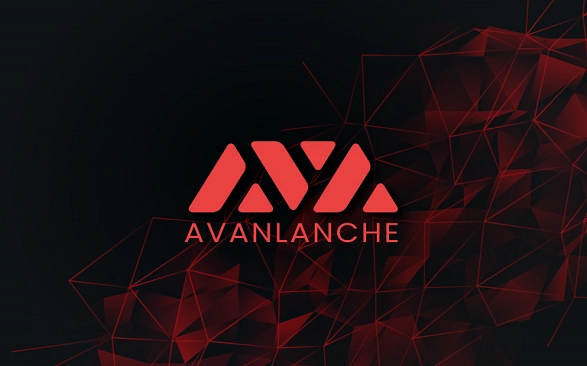How Does Avalanche Crypto Work?
How does Avalanche crypto work in a market saturated with blockchain innovations? The Avalanche network, powered by its native token AVAX, has emerged as a next-generation platform promising lightning-fast transactions, robust security, and unmatched scalability. This investigative report dissects the technology, governance model, and economics behind Avalanche to explain why it stands out in the crowded decentralized finance (DeFi) landscape.
The Vision Behind Avalanche
Avalanche launched in 2020, created by Ava Labs and a team led by Cornell computer science professor Emin Gün Sirer. The project aimed to resolve the blockchain trilemma—scalability, security, and decentralization—without compromising on speed. By blending a novel consensus protocol with flexible architecture, Avalanche offers developers a playground for decentralized applications (dApps), tokenized assets, and custom blockchain networks.
Avalanche Consensus: The Core Mechanism
At the heart of how Avalanche crypto works lies its unique consensus protocol, often called the Avalanche Consensus. Unlike Bitcoin’s proof-of-work or Ethereum’s proof-of-stake, Avalanche uses a repeated subsampled voting mechanism:
- Randomized Voting: Validators repeatedly query random subsets of nodes to confirm transactions.
- Metastability: Once a transaction gains enough votes across multiple rounds, the network reaches consensus almost instantly.
- Low Latency: Finality occurs in under two seconds, making Avalanche one of the fastest smart-contract platforms.
This consensus method ensures high throughput—over 4,500 transactions per second—while maintaining security and decentralization.
Network Architecture: Subnets and Chains
Another critical piece in understanding how Avalanche crypto works is its tri-chain architecture:
- X-Chain (Exchange Chain): Handles the creation and transfer of digital assets.
- C-Chain (Contract Chain): Fully compatible with Ethereum’s Virtual Machine, enabling developers to migrate dApps easily.
- P-Chain (Platform Chain): Manages validators, staking, and the creation of new subnets.
Subnets: Custom Blockchains
Avalanche introduces subnets, independent blockchains with customizable rules. Enterprises or developers can launch their own subnet to meet specific regulatory or performance needs. This flexibility allows Avalanche to serve a variety of use cases, from DeFi protocols to enterprise-grade applications.
AVAX Tokenomics
The AVAX token plays multiple roles:
- Transaction Fees: Gas fees are paid in AVAX and burned, creating a deflationary pressure.
- Staking Rewards: Validators stake AVAX to secure the network and earn rewards.
- Governance: Holders can vote on protocol upgrades, shaping the network’s evolution.
This economic design aligns incentives between validators, developers, and users, fostering a sustainable ecosystem.
Real-World Applications and Ecosystem
How does Avalanche crypto work in practice? Its ecosystem showcases diverse applications:
- DeFi Platforms: Projects like Trader Joe and Benqi leverage Avalanche’s speed and low fees.
- NFT Marketplaces: Platforms such as Kalao and Joepegs enable fast, cost-efficient NFT trading.
- Institutional Use Cases: Avalanche subnets attract enterprises seeking compliant blockchain environments.
For a detailed list of active dApps, visit DefiLlama’s Avalanche page.
Security and Decentralization
Avalanche’s validator set is globally distributed, ensuring resilience against attacks. Its proof-of-stake mechanism requires a minimum of 2,000 AVAX to become a validator, balancing accessibility with network security.
The network has so far avoided major exploits, although users must remain vigilant against smart-contract vulnerabilities—a risk inherent in all blockchains.
Scalability Compared to Other Blockchains
When examining how Avalanche crypto works relative to competitors:
- Versus Ethereum: Avalanche offers faster finality and lower fees, though Ethereum’s upcoming scaling solutions may narrow the gap.
- Versus Solana: While Solana boasts high throughput, Avalanche’s subnet model provides greater flexibility and reliability.
- Versus Polkadot: Both support customizable chains, but Avalanche reaches consensus more quickly.
These technical advantages have positioned Avalanche as a serious contender in the Layer 1 race.
Development and Roadmap
Avalanche continues to innovate:
- Evergreen Subnets: Tailored for institutions requiring permissioned environments.
- Cortina Upgrade: Enhances cross-chain interoperability and optimizes fees.
- Interoperability Bridges: Connections to Bitcoin, Ethereum, and other chains widen its reach.
Developers are also exploring Layer 2 solutions to further enhance scalability and privacy.
Risks and Challenges
Despite its strengths, Avalanche faces key challenges:
- Market Competition: Ethereum’s dominance and the rise of alternative Layer 1s intensify the race for developers and liquidity.
- Regulatory Scrutiny: Like all crypto networks, Avalanche could face evolving legal frameworks across jurisdictions.
- Validator Centralization: Although decentralized, higher staking requirements could limit participation over time.
Understanding these risks is crucial for investors and developers considering Avalanche.
FAQs: How Does Avalanche Crypto Work?
How does Avalanche crypto work for DeFi applications?
Avalanche enables fast, low-cost transactions, making it ideal for DeFi platforms such as lending protocols, decentralized exchanges, and stablecoin ecosystems.
How does Avalanche crypto work compared to Ethereum?
Avalanche achieves sub-second finality and higher throughput using its unique consensus, while Ethereum relies on proof-of-stake and Layer 2 solutions for scalability.
How does Avalanche crypto work for NFTs?
Its low fees and rapid finality allow NFT marketplaces to mint, buy, and sell digital art with minimal latency and cost.
How does Avalanche crypto work with subnets?
Subnets let developers launch independent blockchains with custom governance, regulatory compliance, or privacy settings while remaining secured by Avalanche validators.
Analytical Conclusion
How does Avalanche crypto work in shaping the future of decentralized technology? By merging a groundbreaking consensus protocol with a flexible, subnet-driven architecture, Avalanche presents a compelling solution to blockchain scalability. Its ability to host thousands of customizable networks could attract institutional players and mainstream adoption.
Still, Avalanche must sustain developer interest and navigate regulatory landscapes to maintain momentum. If it continues to innovate and expand partnerships, Avalanche could remain a leading force in the next phase of Web3 infrastructure.

